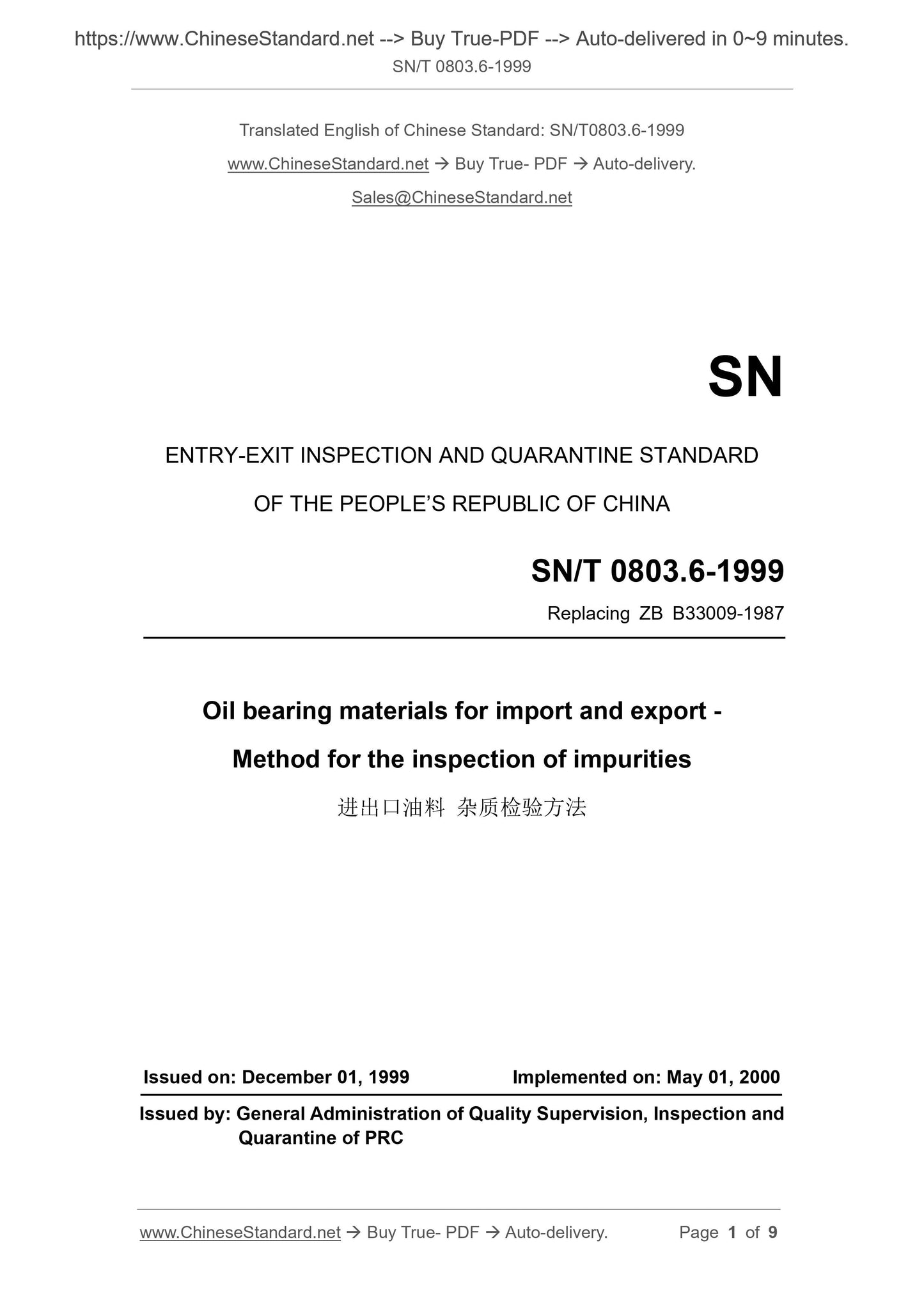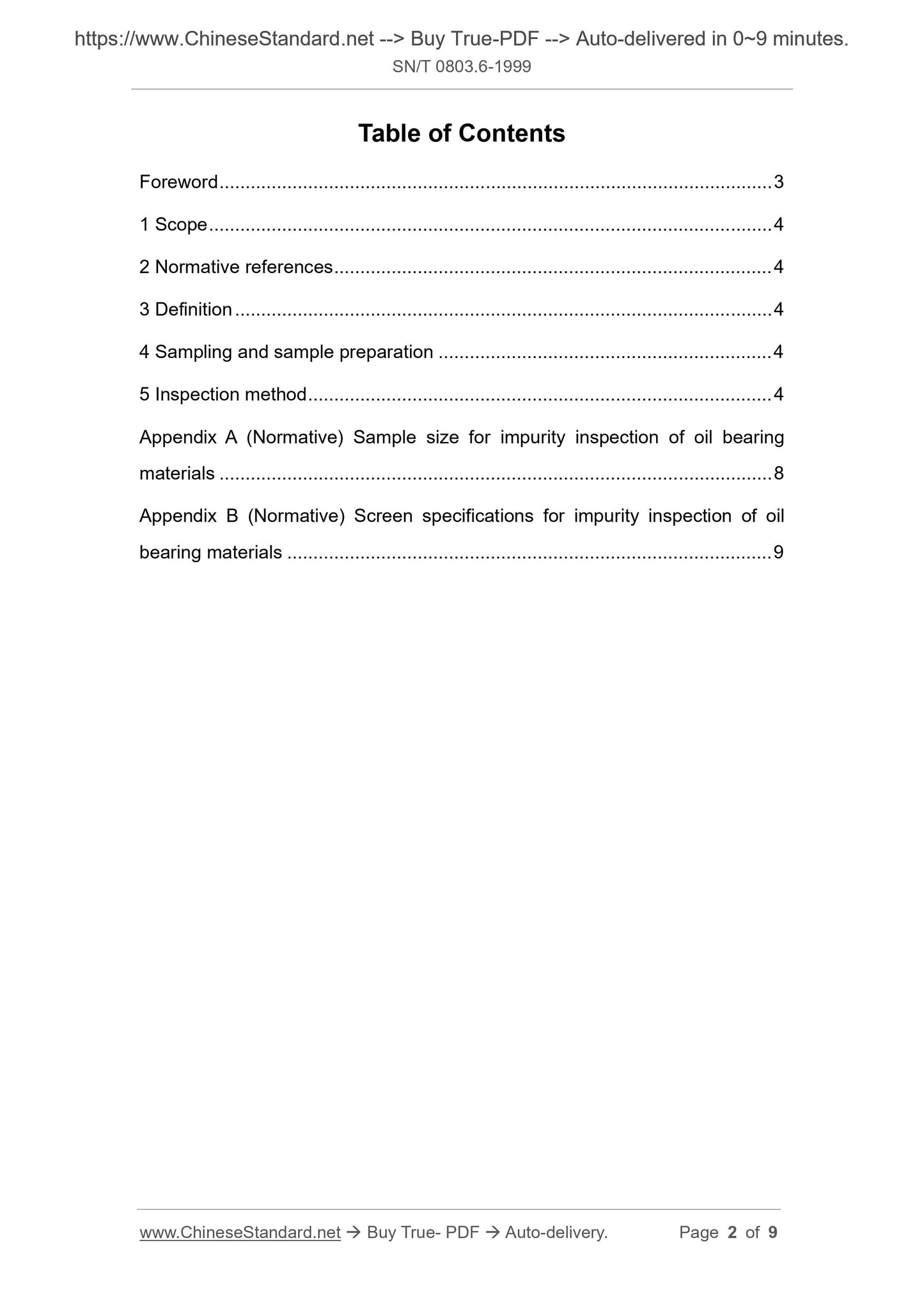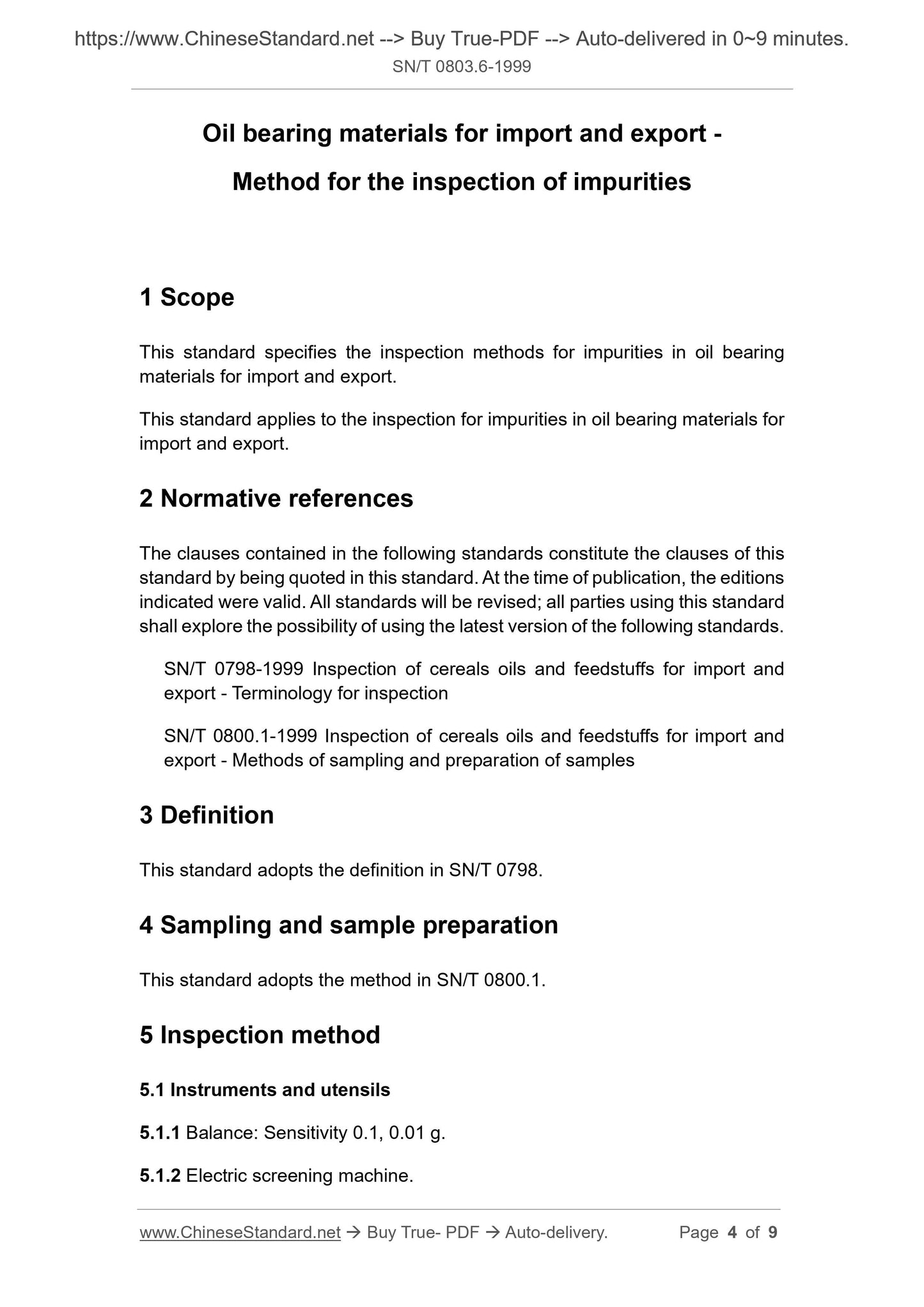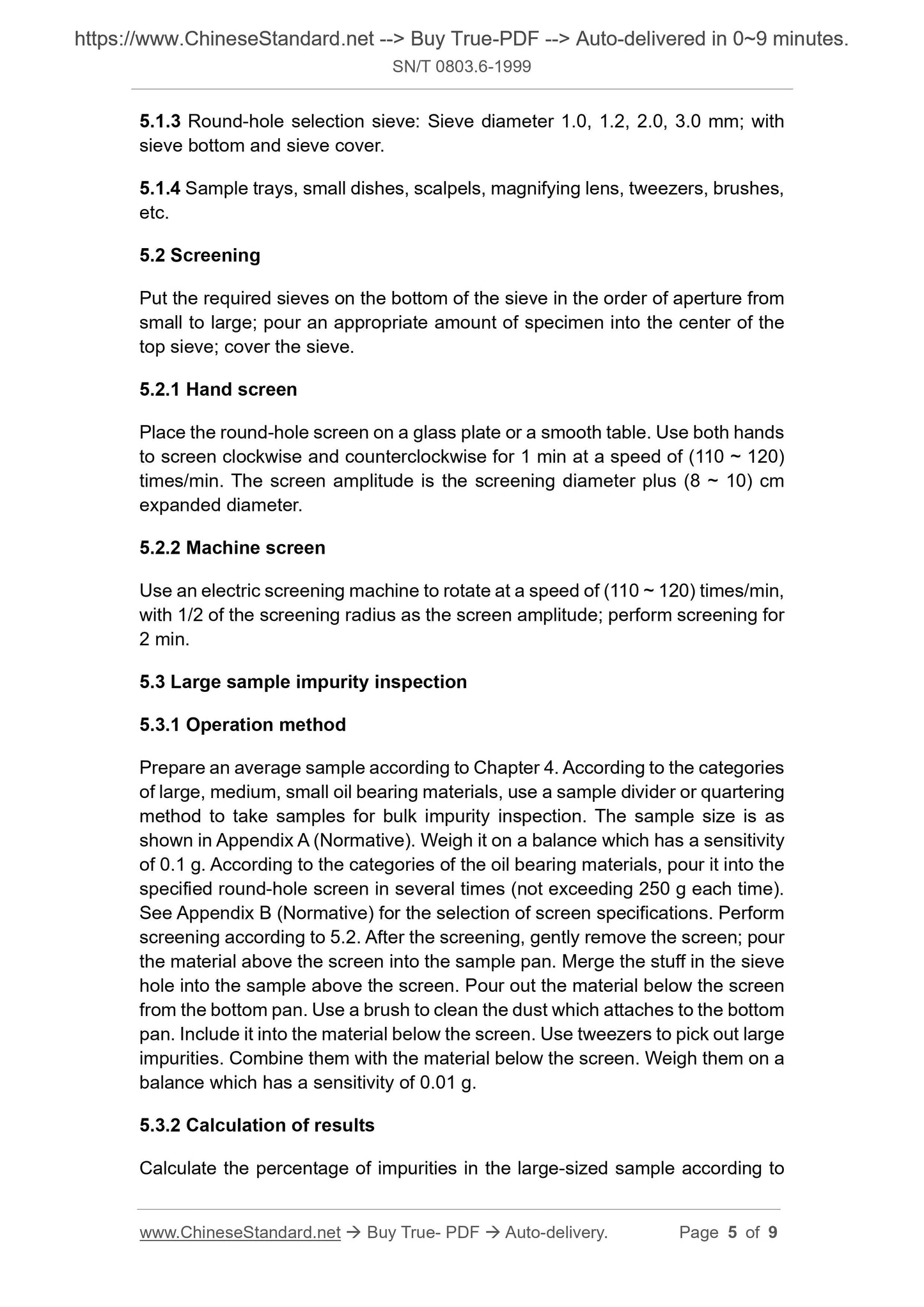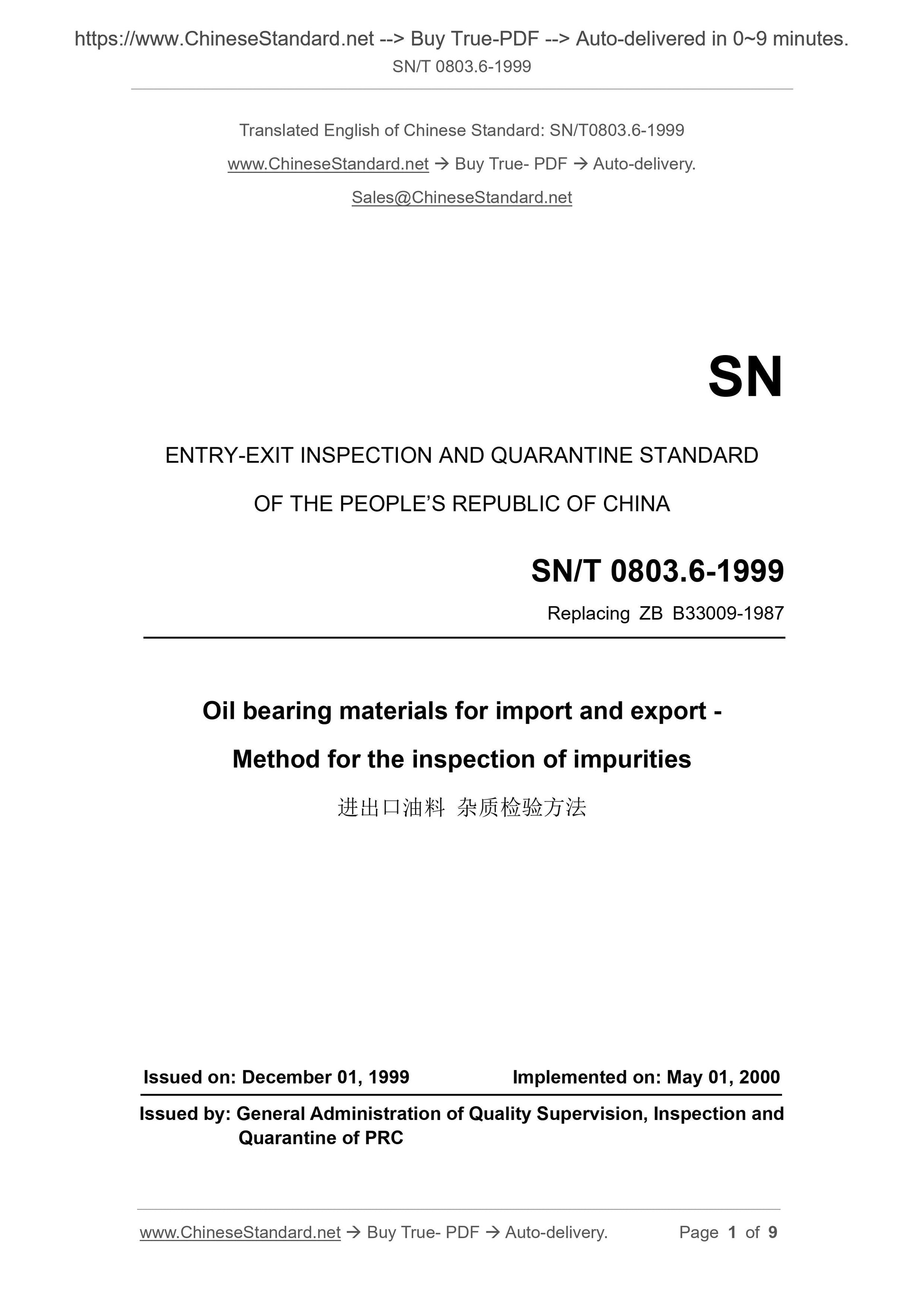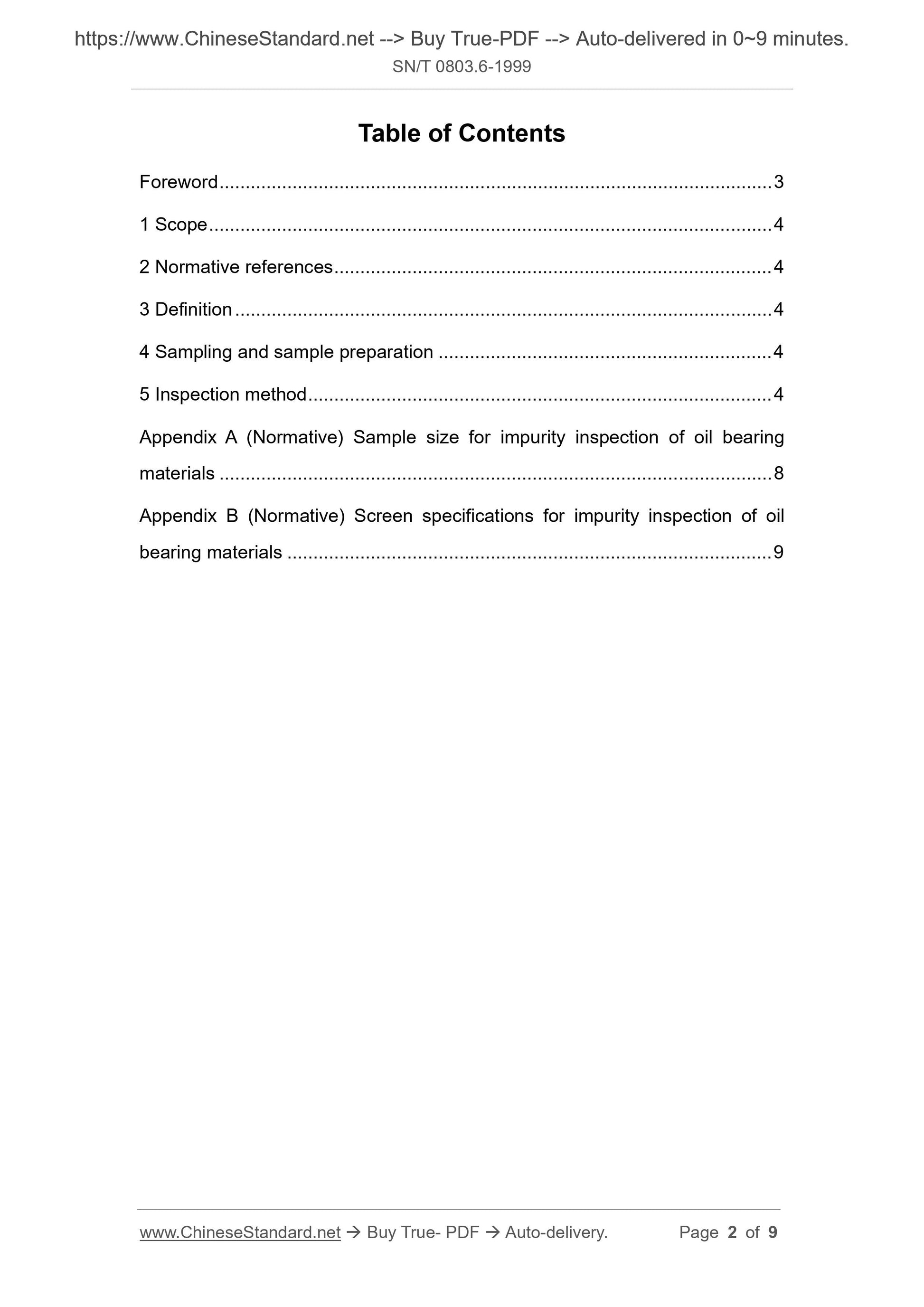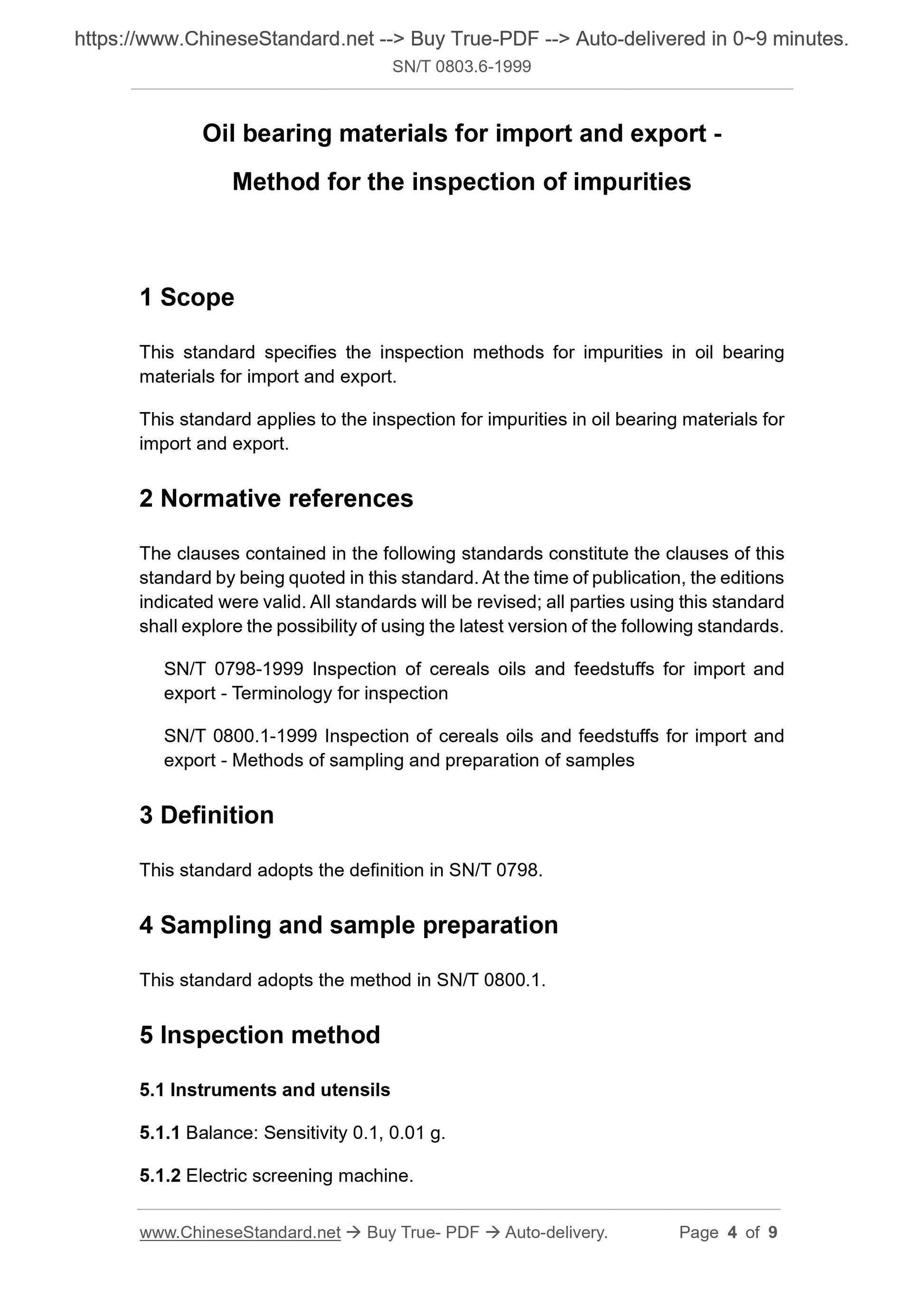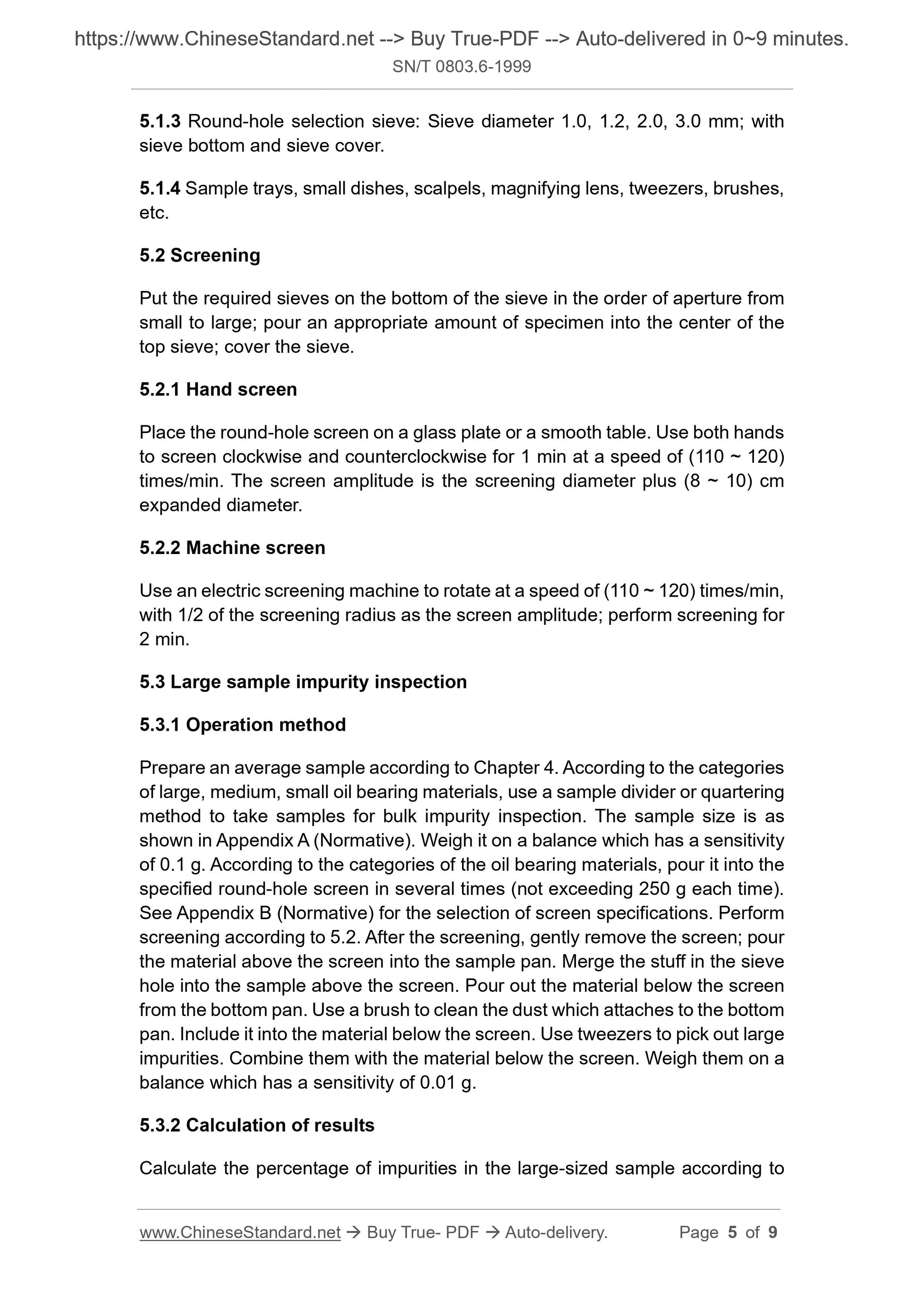1
/
of
4
www.ChineseStandard.us -- Field Test Asia Pte. Ltd.
SN/T 0803.6-1999 English PDF (SN/T0803.6-1999)
SN/T 0803.6-1999 English PDF (SN/T0803.6-1999)
Regular price
$205.00
Regular price
Sale price
$205.00
Unit price
/
per
Shipping calculated at checkout.
Couldn't load pickup availability
SN/T 0803.6-1999: Oil bearing materials for import and export. Method for the inspection of impurities
Delivery: 9 seconds. Download (and Email) true-PDF + Invoice.Get Quotation: Click SN/T 0803.6-1999 (Self-service in 1-minute)
Newer / historical versions: SN/T 0803.6-1999
Preview True-PDF
Scope
This standard specifies the inspection methods for impurities in oil bearingmaterials for import and export.
This standard applies to the inspection for impurities in oil bearing materials for
import and export.
Basic Data
| Standard ID | SN/T 0803.6-1999 (SN/T0803.6-1999) |
| Description (Translated English) | Oil bearing materials for import and export. Method for the inspection of impurities |
| Sector / Industry | Commodity Inspection Standard (Recommended) |
| Classification of Chinese Standard | B33;X14 |
| Word Count Estimation | 6,650 |
| Date of Issue | 12/1/1999 |
| Date of Implementation | 5/1/2000 |
| Older Standard (superseded by this standard) | ZB B33009-1987 |
| Quoted Standard | SN/T 0798-1999; SN/T 0800.1-1999 |
| Adopted Standard | ISO 658-1988, NEQ |
| Issuing agency(ies) | State Administration for Entry - Exit Inspection and Quarantine of the People Republic of China |
| Summary | This standard specifies test methods and export oil impurities. This standard applies to child into the oil-bearing impurities pass inspection. |
Share
